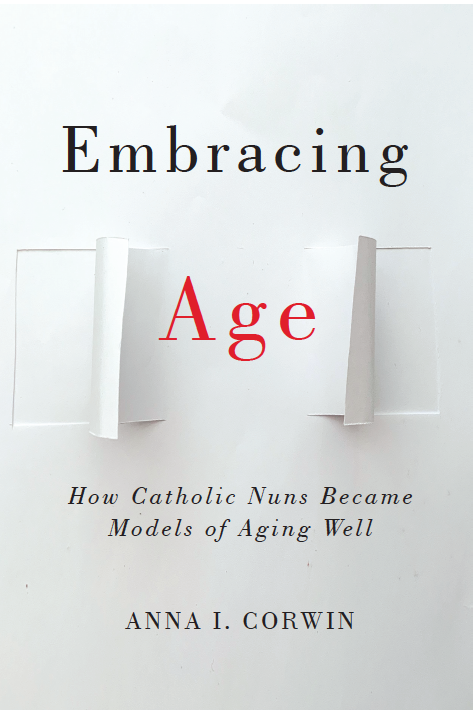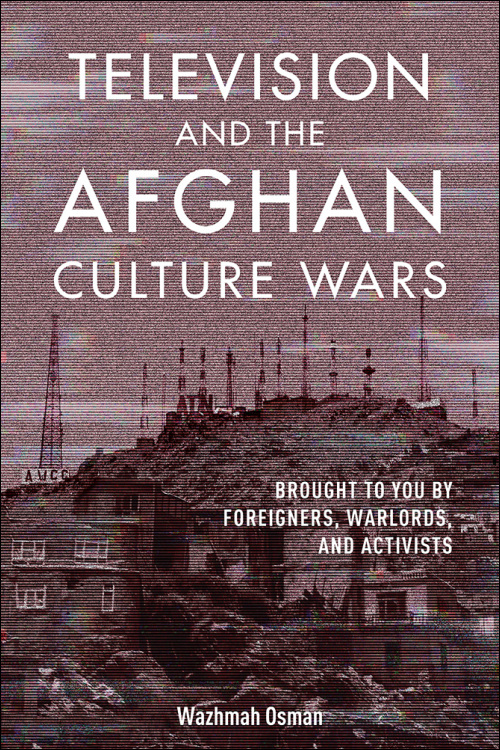
Interview by H. Keziah Conrad
https://www.rutgersuniversitypress.org/embracing-age/9781978822276
H. Keziah Conrad: One of the central arguments you make in the book is that there is something wrong with the “successful aging” model put forward in gerontology and popular discourses. Can you say more about what the successful aging model is, and why you see it as problematic?
Anna I. Corwin: The notion of successful aging emerged in the 1990s and was adopted in both research and popular discourses as an appealing alternative to previous models that described aging as a process of inevitable decline into decrepitude. It gained popularity quickly, and the past few decades have seen a tremendous outpouring of research on the topic of successful aging – research that seeks to understand how individuals can live longer and be healthier in older age.
While this might seem to many folks like an unequivocally positive move, anthropologists and critical gerontologists have shown that the research and the popular discourses on successful aging embed neoliberal cultural values and assumptions into what they are naming as science. Instead of simply measuring health outcomes (which anthropologists know can be culturally variable), the literature promotes a model of success in older age in which individuals are independent, productive, active, ageless adults. In other words, as Sarah Lamb and others have pointed out, the successful aging paradigm is promoting a model of aging that involves not aging at all.
This is problematic for two central reasons: First, this model of success implies that one can fail at aging, which itself is an absurd notion (and has extremely important implications for how one thinks about disability and personhood). It is particularly problematic when we remember that systematic oppression including environmental racism creates a landscape that disproportionately impacts Black and Brown individuals’ health outcomes throughout the lifecourse, compounding toward the end of life
Second, the successful aging model is simply not scientifically robust – not only are measures of independence, for example, not always measures of health and well-being, they also are not values or qualities seen in a number of communities (like the sisters in Catholic convents) where people are documented to experience positive health outcomes at the end of life. As I explore in the book, in the convent, where sisters experience longevity and increased physical and psychological well-being at the end of life, the nuns demonstrate precisely the opposite cultural values and practices by emphasizing interdependence and socialization into letting go, or, as in the title of the book, Embracing Age.
Keziah Conrad: Embracing Age contributes to the literature on linguistic relativity, and you argue that language shapes how we age. You also say that simply looking for different words to replace stigmatized words like “old” will not itself change the stigma attached to aging in the US. What is it about the nuns’ language practices that goes deeper in actually shaping experience?
Anna Corwin: There have been campaigns, both formal and informal, in recent years to rid English of words that stigmatize older adults: for instance, banning the terms “old” and “elderly” in favor of “older adults.” While I am, of course, completely supportive of policies that work to destigmatize aging, I’m quite skeptical of movements that target words alone. Avoiding specific words will do nothing unless we address the underlying cultural practice and social structures that create aging stigma in the first place.
In the convent, the sisters learned to treat old age as a normative part of the life course through linguistic practices that went far beyond word choice. One of the chapters in the book (Chapter 3) looks at the sisters’ prayer practices. As it turns out, prayer is more than just a way to engage with God. Prayer also is a way for the sisters to tell each other about the needs of others in the convent, to offer and provide social support, to communicate institutional ideals, and even to express ideals about aging. For example, instead of praying for intervention or direct healing from God, the sisters in the convent would pray that a sister who was suffering find “the grace to accept” what she was enduring. Through these public, intercessory prayers, all the sisters learned community values around aging, acceptance, and the value of letting go.
Another example of the way linguistic practices shaped the nuns’ attitudes and experiences of aging was the ways the sisters treated their peers who had experienced significant decline. Even when sisters had conditions such as aphasia and couldn’t speak, or had deteriorative neurological conditions and couldn’t move, they were included in meaningful everyday activities such as worship, prayer, and social activities like card games. I devote nearly an entire chapter to looking at the micro-interactional processes through which the sisters skillfully engaged peers who have declined in mutually enjoyable, meaningful everyday activities. Building on the literature on linguistic relativity, I suggest that language and experience dynamically shape each other through habitual interactions that occur over a lifetime.
Keziah Conrad: In Embracing Age you show that socialization processes occur throughout the life-course (not only in childhood), and that socialization practices are key to how the Catholic Sisters you worked with learn to age and die. What are some of these practices? How are the nuns socialized to embrace aging?
Anna Corwin: When I arrived at the convent and began to spend time with older sisters, one of the things I was struck by was the ways that aging, end-of-life, and death were embraced in the convent as normative parts of the life-course. This stood out as particularly striking as it contrasted with mainstream practices outside the convent in the rest of the Midwest and United States where elderly adults and disabled folks are often segregated from many everyday activities and spaces. In the convent, elderly sisters continued to be integrated in meaningful everyday activities, which also meant that younger sisters continued to engage with and learn with these sisters, for example, learning how to age themselves as they interacted with their older peers.
The sisters’ embrace of aging as a normal and natural part of the life course was also underscored theologically as they emphasized notions of kenosis, which included practices of letting go of individual control and desire. This occurred in prayer, everyday narratives or storytelling over meals, in care interactions, and in social interactions such as card games. For example, in prayer, instead of petitioning the divine for healing (as one might in some Protestant communities), the sisters learned to pray for acceptance, for grace, or for God to walk with them in their pain.
They also embraced the oldest members of their community in very practical ways. In the convent infirmary, instead of caring-for and other uni-directional care interactions we often see in institutional care settings, the sisters mutually engaged with and valued elderly peers in on-going, dynamic arrangements. For example, one day when I was shadowing a sister (S. Irma — all names are pseudonyms) in the infirmary, the sister provided blessings for her elderly peers. In one of the rooms, we met Sister Helen who had aphasia and whose mobility was significantly limited. Sister Irma asked Sister Helen to bless me – and to my surprise, she proceeded to place Sister Helen’s hand on my forehead and Sister Helen blessed me using words I could not decipher. Ultimately, the form of prayer, in which God is the recipient of the request for a blessing, the fact that we could not make out her words did not matter. The blessing was seen as meaningful as she was interceding on my behalf to request the blessing. In this way, Sister Helen and her peers with significant chronic conditions such as aphasia and neurological conditions that limited communication and movement were included as meaningful interlocutors in everyday practices. By engaging elderly peers with physically and/or communicatively limiting conditions in meaningful everyday activities, the sisters demonstrated that they actively valued and included all members of the community, even those who were infirm and/or disabled. All of these practices and many more served to teach the sisters how to embrace aging as they themselves grew older.
Keziah Conrad: What kind of experiences have you had sharing this work with older adults who are seeking models of how to age gracefully or successfully?
Anna Corwin: I have presented my work to public audiences and have offered 8-week workshops in my community where I introduce my research findings and invite older adults to engage with the work. In these spaces, I have seen how pervasive and appealing the mainstream model of successful aging is in the United States and I have been struck by the power and prevalence of the dual desires to avoid aging and, if one must age, to do so while maintaining independence and control over the body. The notion of embracing aging doesn’t always sound appealing to mainstream Americans and people have sometimes voiced disappointment and resentment to me that I do not offer tips to avoid aging. However, I have seen some remarkable transformations as individuals begin to notice the popular discourses of aging that surround them. Most often, the pushback I receive develops into an articulation and rejection of the stigmatizing and troublesome discourses that individuals begin to note in their everyday lives. I have witnessed many people replace old internalized practices with new, hopeful, more loving practices.
One of my hopes for this book is that it allows more people to become aware that the popular discourses of aging which stigmatize, segregate and otherwise demean older adults are not the only way to approach aging. There is tremendous diversity in how aging is understood and experienced across cultural contexts. Doing this research has filled me with a lot of hope as I have witnessed the processes through which the nuns value and integrate their aging peers and learn to embrace interdependence and the end of life as they grow older themselves.


